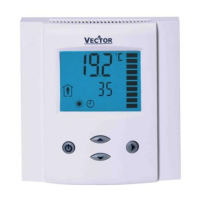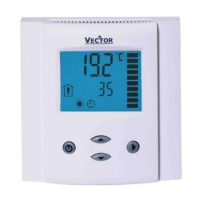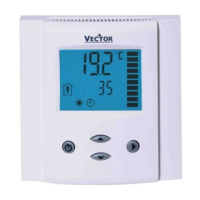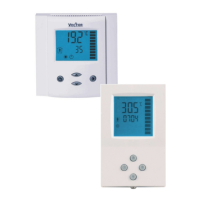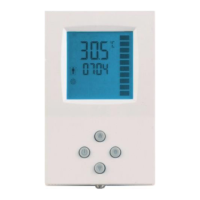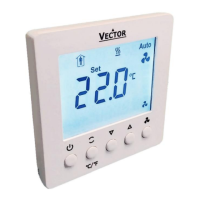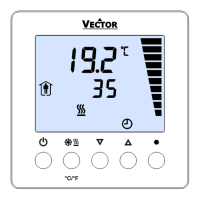TCI-C-Universal Controller
Doc: 70-00-0123, Date: 20091020 © Vector Controls GmbH Page 13
Auxiliary Functions
A auxiliary function is enabled once it is assigned to an input. The parameter settings for an auxiliary function consist of a
parameter to select an input, a time delay and an active and inactive limit.
The active limit may be smaller than the inactive limit of the function. In this case the action is reversed and the function
is activated when the input signal is low.
For a standard function (active limit is above inactive limit), the input needs to cross the active limit for the function to
switch to active mode. In order for the function to switch to inactive mode, the input needs to fall below the inactive limit.
If the input is between inactive and active limits, the function will not change its status.
For a reversed function (active limit is lower than inactive limit), the input has to be below the active limit to activate and
above the inactive limit to deactivate.
The Remote Enable function has the option to switch the way the limits are used. The reaction depends if the active limit
is higher than the inactive limit or vice versa. If the range switch FU14 is set to ON the following applies:
In case active limit is higher than inactive limit: the controller is enabled if input value is higher than active limit and lower
than inactive limit, it is disabled below active limit and above inactive limit.
In case active limit is lower than inactive limit: the controller is enabled if input value is above active limit or below
inactive limit. It is disabled if within limits.
For an open contact input, the jumper needs to be placed into the RT setting. The software switch should be set as well to
RT setting. An open contact will result in a low temperature for the RT setting. A closed contact reads as high temperature.
Set activation limits thus accordingly: For example: Temperature input range 0…100°C, active limit 90°C, inactive limit
10°C. (Active when contact closed).
Toggle of Standby and
Comfort operation modes
Standby and Comfort modes are controlled through an external contact
Activation Delay: Defines the delay the binary contact has to be open before
standby mode is activated.
This function may be used together with key card switches for hotels or motion
detectors for offices.
Remote Enable De-activating the assigned input forces the controller into the OFF operation mode.
The manual override may be disabled with parameters. The operation mode cannot
be overridden by using time schedules. Activating the assigned input, returns control
of the operation mode to the terminal and time schedule.
The operation mode may be disabled on alarm flags. The alarm flags may be selected
by parameter. Switch off delays still apply when an alarm becomes active.
Delay times may be assigned for both activation and de-activation.
This function may be used as AND function for several conditions that need to be met
for the controls outputs to remain active. It may as well be used as window contact to
prevent loss of energy.
Heat-cool changeover with
external switch
Control heat and cool setting of your controller from a central location by a central
switch over. Note: all ground levels of involved controllers must be the same. Select
binary input settings outlined above.
Auto Changeover with supply
media temperature sensor
The external input may be used to automatically determine heating or cooling mode
by measuring the temperature of the supply media. Connect a qualified passive
sensor or active temperature transmitter to the assigned input. Heating mode is
activated once the supply temperature is above the heating limit. Cooling is activated
when the supply temperature is below the cooling limit. The limits may be defined in
software. Standard is 16°C (61°F) for cooling and 28°C (83°F) for heating
Auto Changeover with outside
temperature sensor
The external input may be used to automatically determine heating or cooling mode
by measuring the outdoor temperature. Connect a qualified passive sensor or active
temperature transmitter to the assigned input. Heating mode is activated once the
supply temperature is below the heating limit. Cooling is activated when the supply
temperature is above the cooling limit. The limits may be defined in software.
Standard is 16°C (61°F) for heating and 28°C (83°F) for cooling.
Heat-cool changeover based
on demand of one control
loop
Heat and cool state of the controller may as well be determined by the state of one of
its control loops.
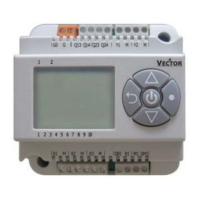
